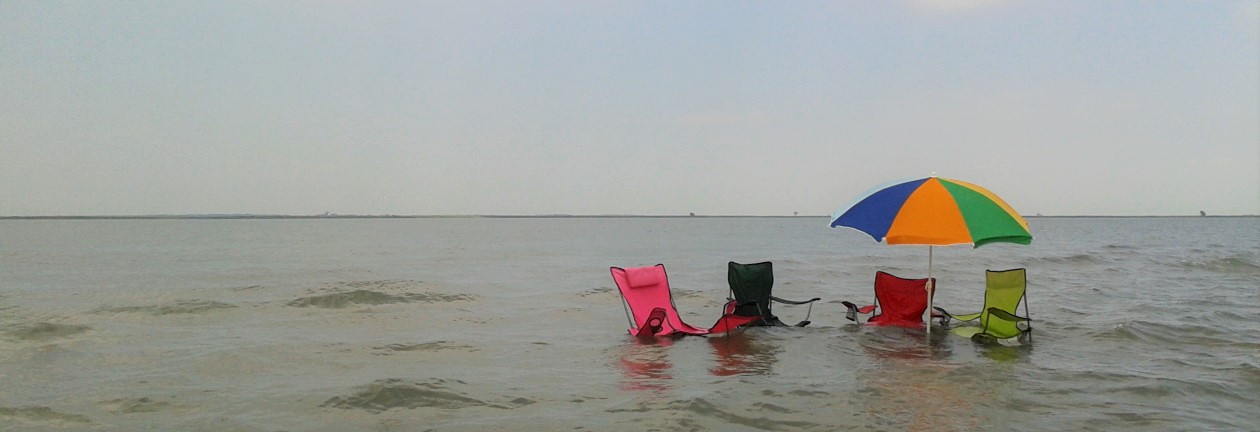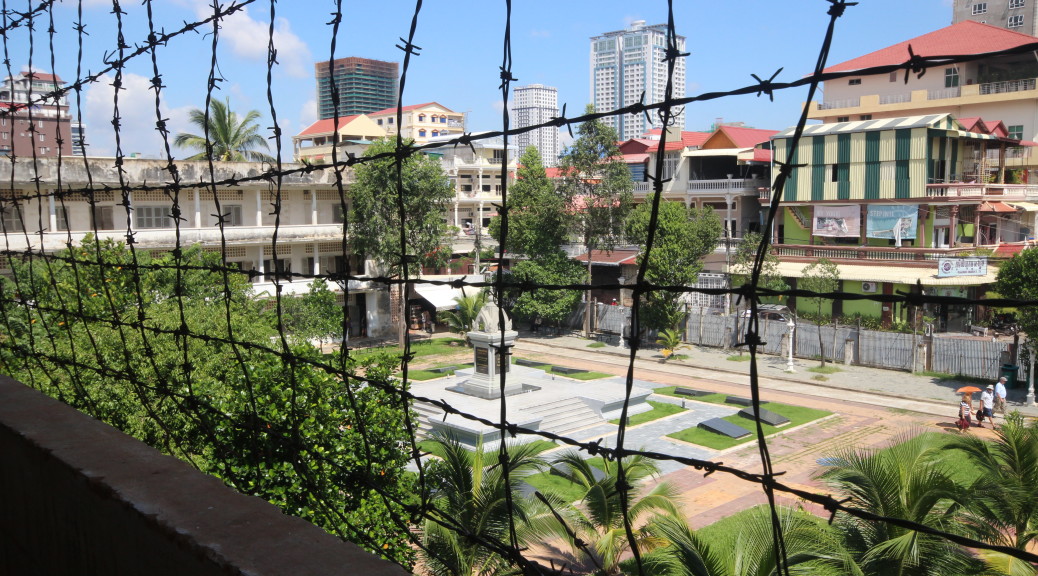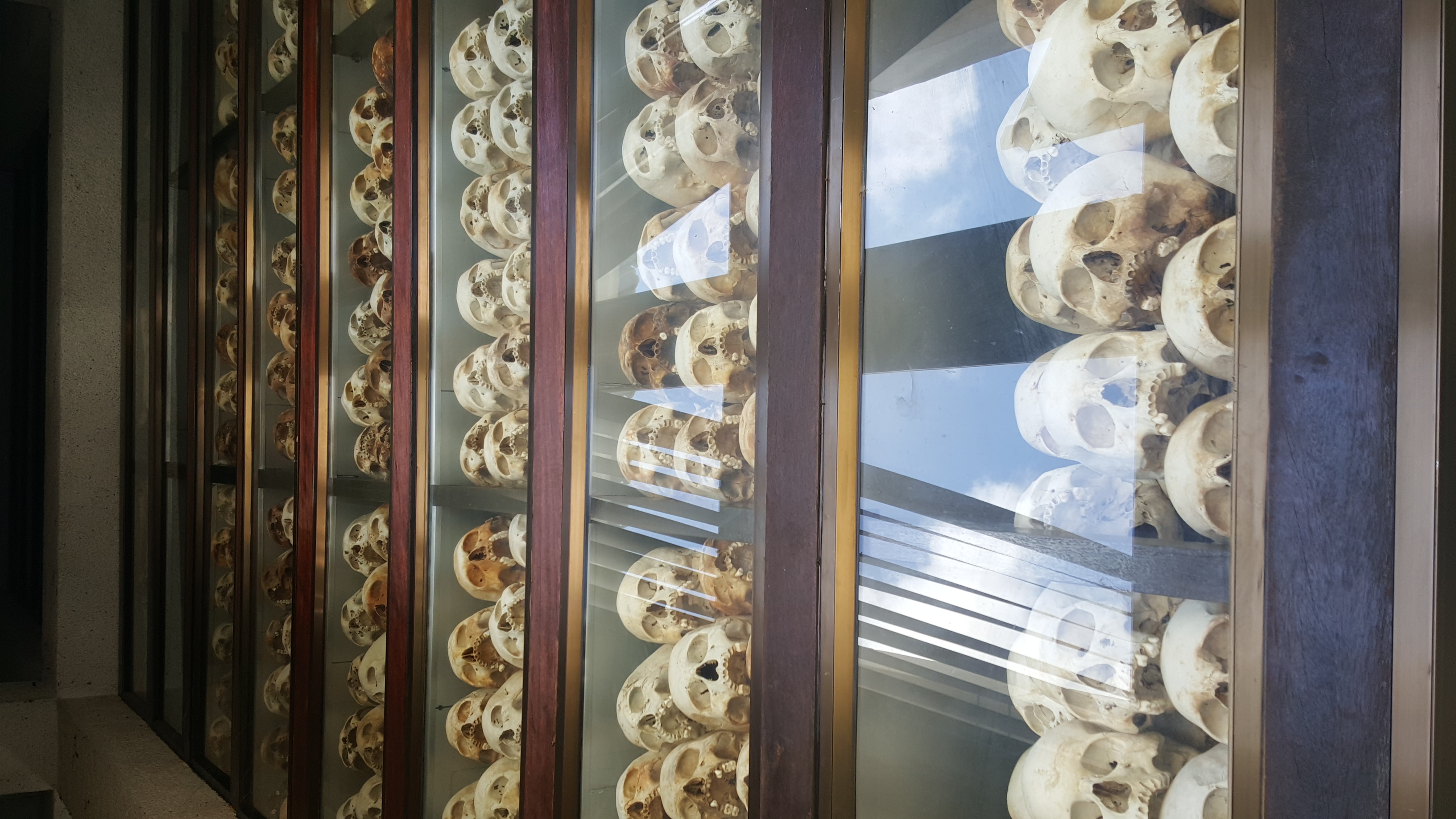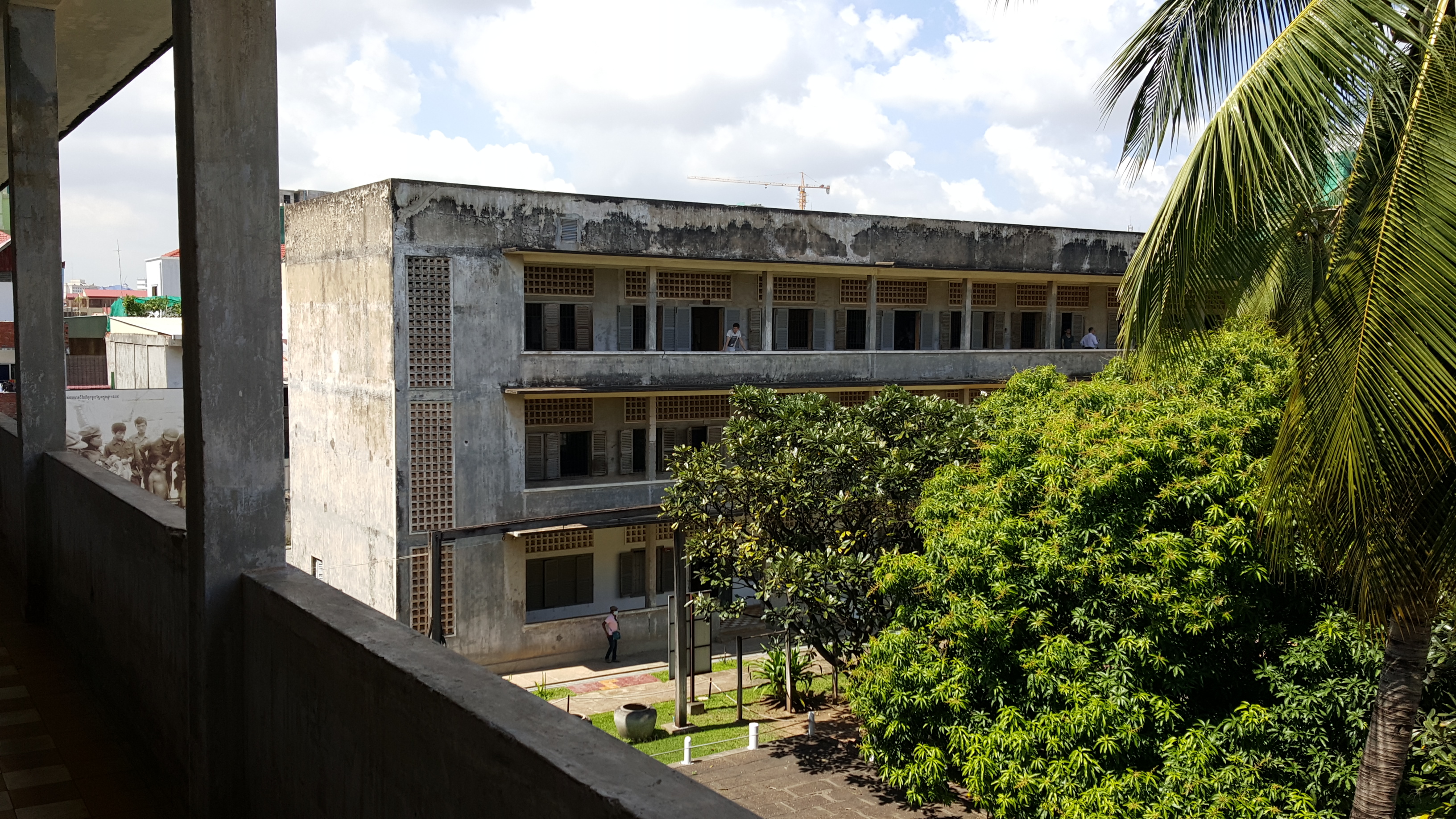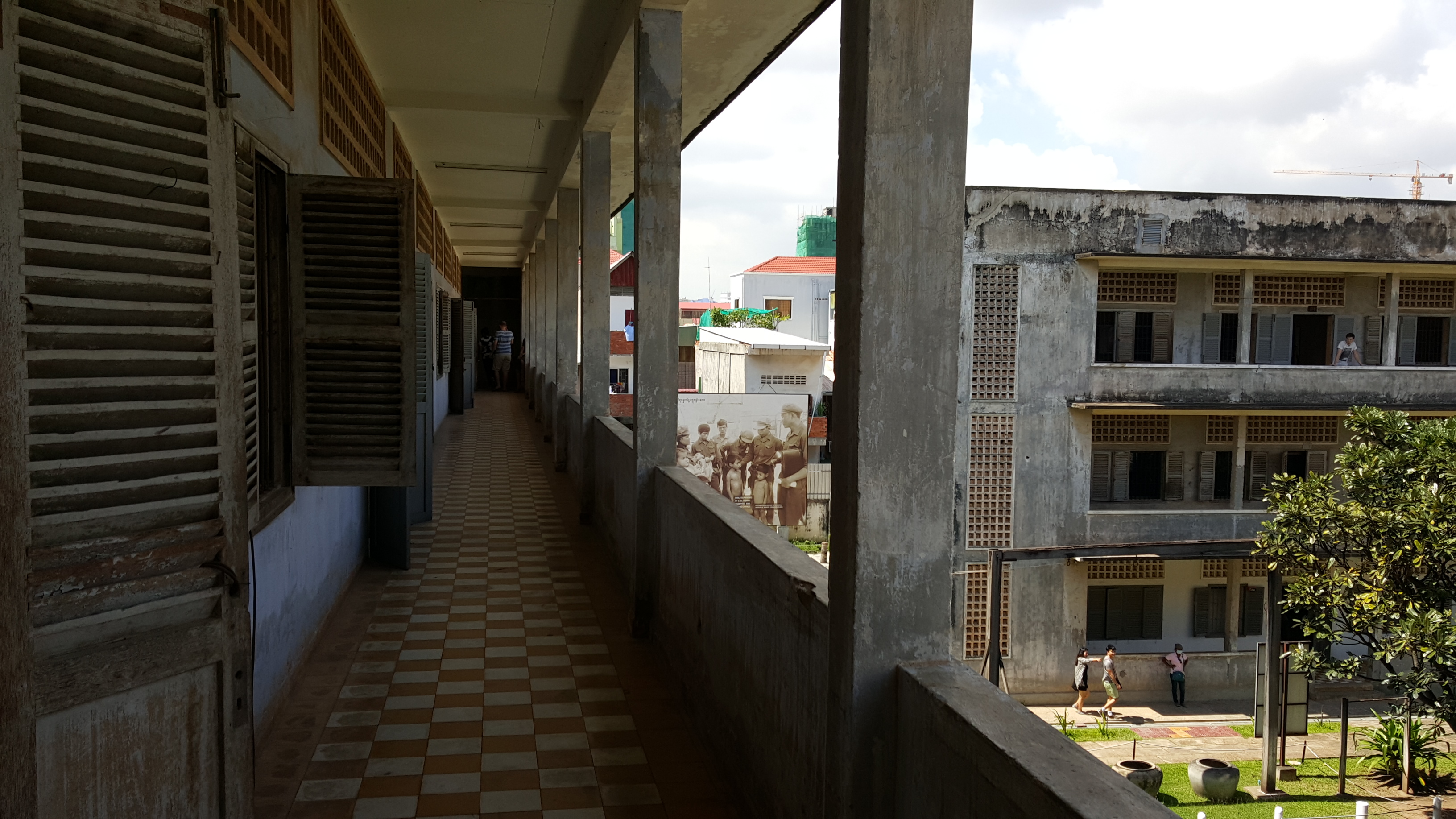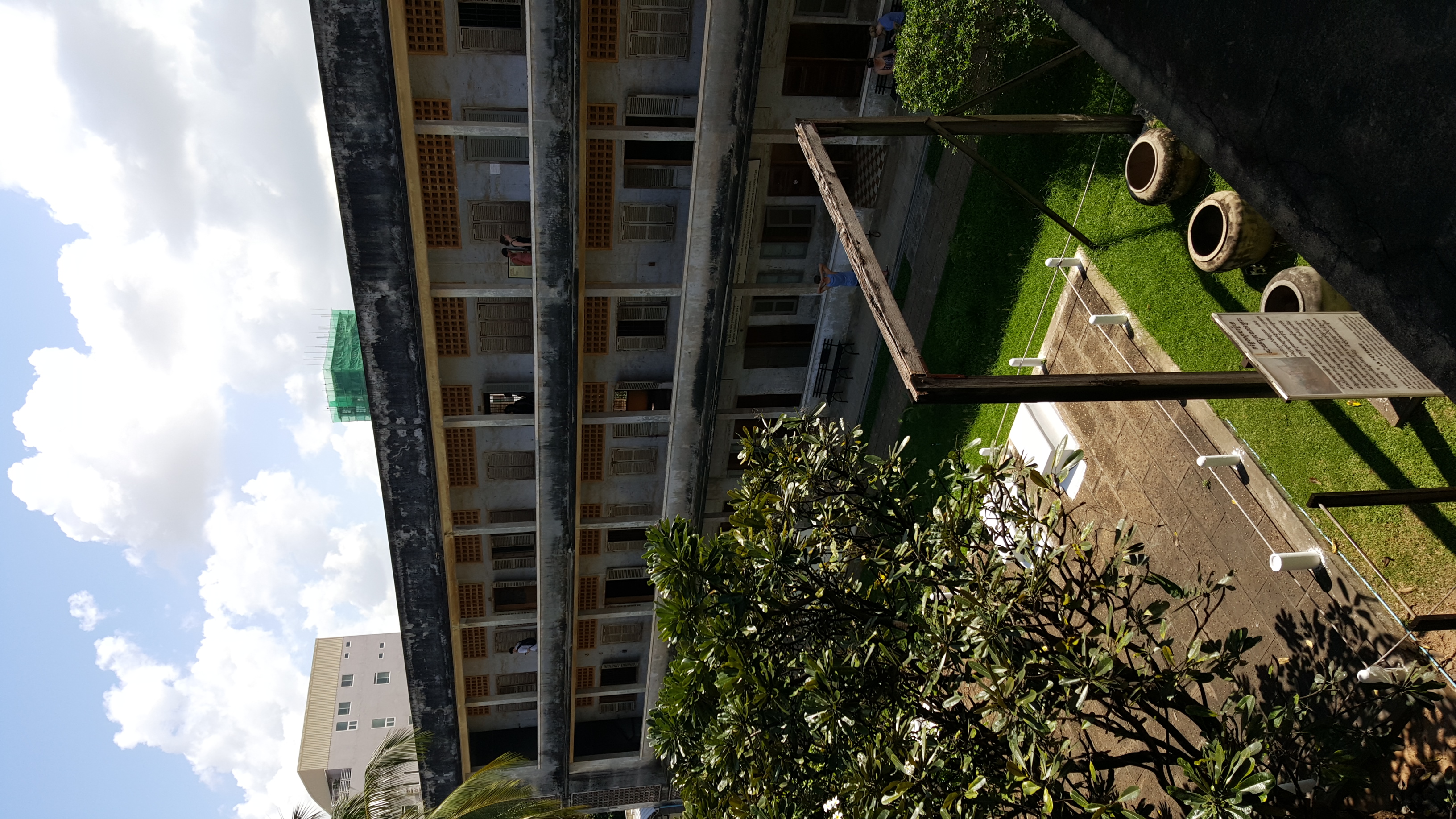This was to be our last day in Cambodia. Our flight home wasn’t scheduled until 11:30pm, so we had the whole day open. It was the day for which we’d planned to visit the Killing Fields at Choeung Ek and the Tuol Sleng Genocide Museum. I’m sure many would ask as to why we would schedule our trip to end with visits to these horrible sights; we’d asked ourselves the same question. The answer is that it is simply necessary. Any trip to Cambodia should include a visit to bear witness and learn more about the genocide committed by the Khmer Rouge between 1975 and 1979. It is estimated that as many as 3 million of Cambodia’s 8 million people had been killed.
The Killing Fields at Choeung Ek is one largest and most known of Killing Fields in Cambodia. In the late 1980’s, significant construction had gone underway to build monument to memorialize the thousands of people were brought here to be slaughtered.
The Memorial Stupa at Choeung Ek contains the skulls and other bones of nearly 9,000 of the Khmer Rouge’s victims. Whether by bullet or machete, many of the skulls still show evidence as to how these people died.
A tour of around the grounds brings the scene to life. We were given audio transmitters that help describe the various locations on the property, often with stories and testimony by some who’ve witnessed the atrocities.
Although many of the victims had been unearthed for preservation or proper burial, mass graves still give a chilling reminder of what happened here.
First hand evidence that many people had died here was easily seen as we walked. We were told to mind our footsteps as bones, teeth and clothing of some of the victims still poked through the earth.
One of the most emotional sites on our tour was The Killing Tree. It was here that babies and small children were killed by smashing them against the tree as their mothers watched. Loud music was played to drown out the screaming and crying. When the reality of what had happened at Choeung Ek was discovered following the fall of the Khmer Rouge, the Killing Tree was still stained with the blood of the children. Today, many tourists leave behind “lucky” bracelets received at the temples symbolizing the pain everyone feels for these young souls.
After finishing our tour at the killing fields, we had short ride over to the Tuol Sleng Genocide Museum. This was the location where Pol Pot’s regime transformed the Tuol Svay Prey high school into the Khmer Rouge’s most notorious prison. S-21, as it was called, was one of the places where thousands of victims (peasants, workers, engineers, doctors, professionals, students, monks, etc.) were imprisoned, and ultimately exterminated with their wives and children. Walking through the the converted class rooms, it was easy to imagine the horror these people experienced.
We ended our tours with our taxi driver, Sva patiently waiting to return us to the hotel. It was definitely a quiet and solumn ride. One of the most difficult facts to digest regarding what we’d seen was that all of this happened in modern times; it happened in MY lifetime. Knowing the extent of the atrocities, I was hesitant to ask Sva if he had personally been effected. As nearly 1/3 of the Cambodia population had been exterminated, it is pretty easy to surmise that everyone here has a personal connection. Sva lost his brother.
***We encourage all who read this to learn more of the atrocities committed by Pol Pot and the Khmer Rouge. You could start by visiting cekillingfield.org.
